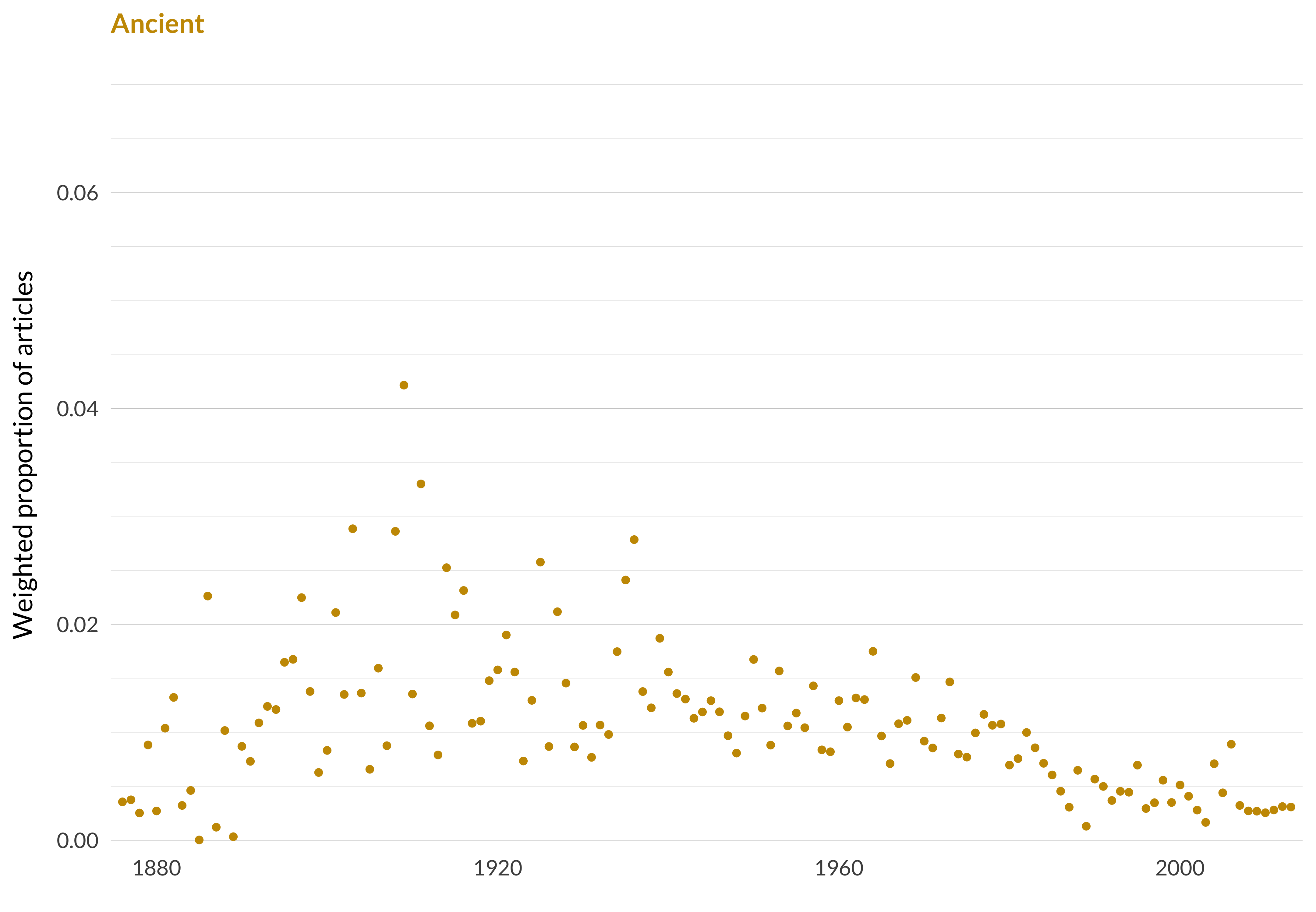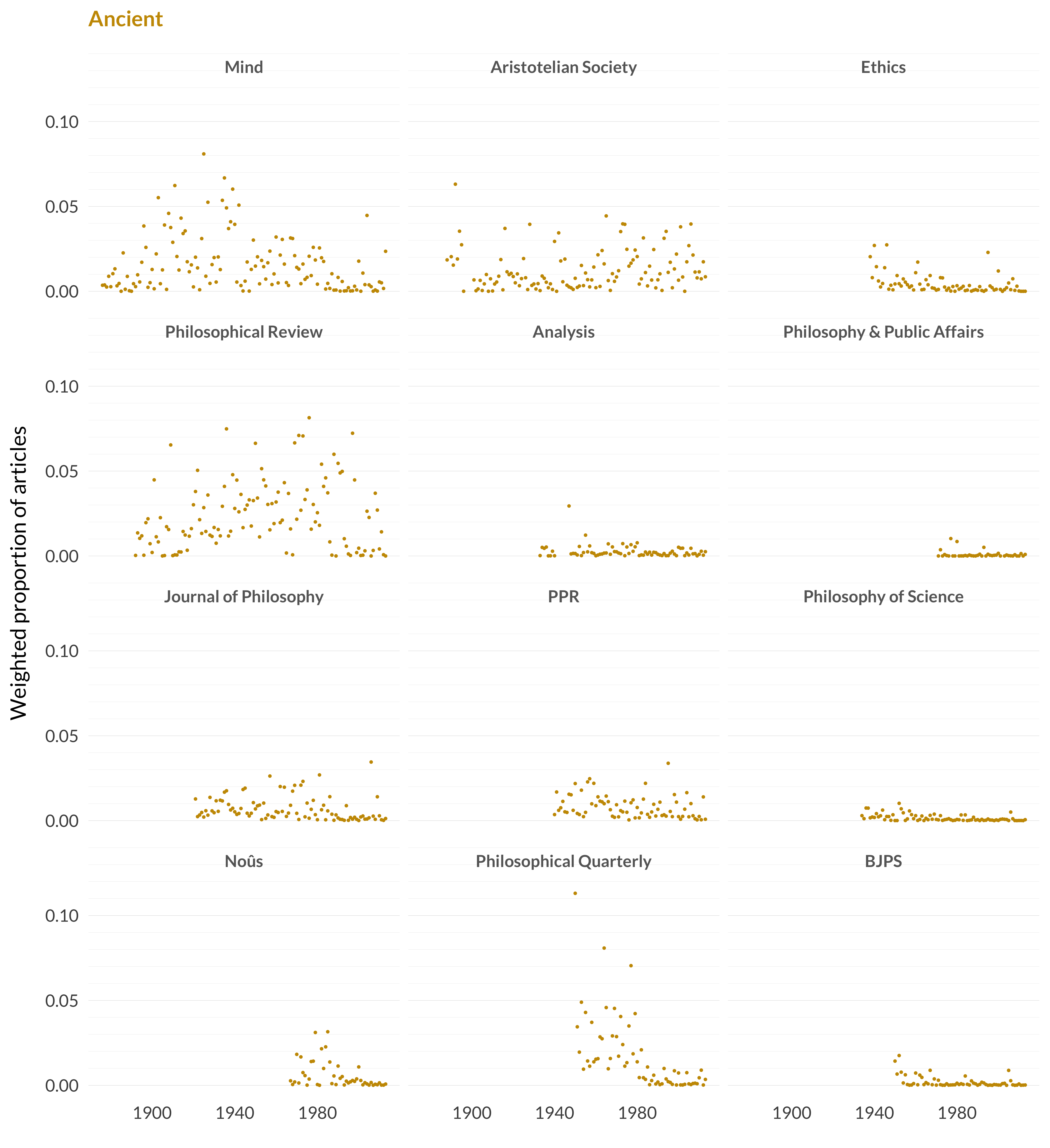2.13 Ancient
Category: History of Philosophy
Keywords: aristotle, parmenides, plato, platonic, republic, socrates, dialogue, greek, dialogues, soul, aquinas, ancient, wisdom, forms, met
Number of Articles: 418
Percentage of Total: 1.3%
Rank: 25th
Weighted Number of Articles: 293.6
Percentage of Total: 0.9%
Rank: 48th
Mean Publication Year: 1957.9
Weighted Mean Publication Year: 1957.9
Median Publication Year: 1962
Modal Publication Year: 1964
Topic with Most Overlap: Ordinary Language (0.0584)
Topic this Overlaps Most With: Universals and Particulars (0.0174)
Topic with Least Overlap: Formal Epistemology (0.00028)
Topic this Overlaps Least With: Races and DNA (0.00012)

Figure 2.37: Ancient.

Figure 2.38: Ancient articles in each journal.
Comments
One of the reasons I ended up with ninety topics was because when I ran this model with sixty to seventy-five topics, it kept putting a weird subset of the Plato papers in with other topics. This was odd because sorting the ancient philosophy papers neatly together was something that just about every other model run did perfectly. And I thought it should be easy for this one too, if I just bumped up the number of topics a bit. And eventually it happened. I kind of expected that I’d have more models that separated Aristotle from Plato, but I don’t think I ever saw that.
The publication numbers are much as I expected. The raw numbers outrun the weighted numbers, which is possibly surprising. If there was more name checking of ancient philosophy in contemporary works—meaning there were a bunch of things that are not really ancient philosophy papers but which had just enough ancient philosophy to confuse the model—it would be the other way around. But the model knows that the word platonism in a metaphysics or philosophy of math paper doesn’t mean we’re maybe doing ancient philosophy.
Still, it does end up being twenty-fifth of the ninety topics. Given the relative importance of books to papers in ancient philosophy, and the complete lack of interest in ancient philosophy from some of these journals, I feared it could be lower than this.